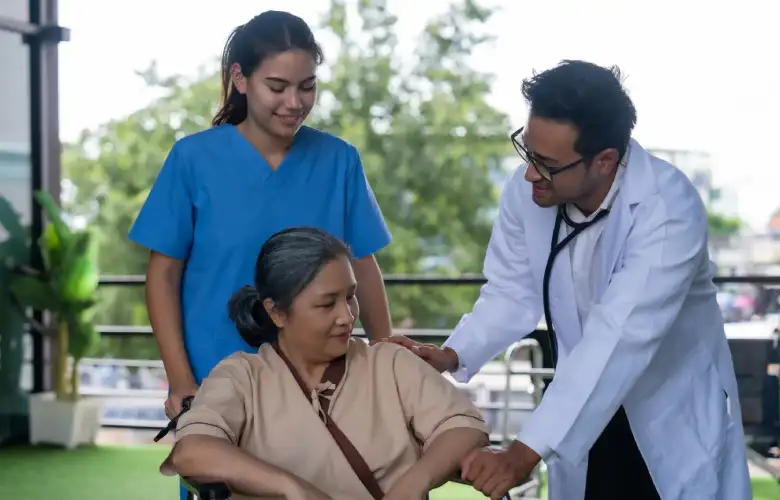Why Rural Health Funding Matters in 2025
Nearly 60 million Americans live in rural areas where barriers like provider shortages, limited access, and infrastructure gaps persist. These communities face higher rates of chronic disease, behavioral health challenges, and limited access to preventive care compared to urban populations.
To address these disparities, the Health Resources and Services Administration (HRSA) is investing over $15 million in 2025 through its Rural Health Care Services Outreach Program. The program supports projects that expand access to care, strengthen local health partnerships, and improve measurable health outcomes across underserved rural populations.

Breaking Down the HRSA 2025 Rural Funding Program
Who Can Apply
Eligible applicants include:
- Public and private nonprofit and for-profit organizations
- Federally Qualified Health Centers (FQHCs) and Rural Health Clinics (RHCs)
- Critical Access Hospitals and Tribal health organizations
- Local or county health departments, academic institutions, and school systems
- Rural consortia of three or more health-related organizations
Priority Focus Areas
- Chronic disease prevention (diabetes, hypertension, heart disease, cancer)
- Behavioral health, substance use treatment, and mental health services
- Maternal and child health, nutrition, and obesity prevention
- Innovative models such as telehealth, mobile care, and school-based outreach
Grant Size & Duration
- Funding range: approximately $150,000–$300,000 per year, depending on project scope and HRSA budget allocations.
- Project period: four years, with the next cycle expected to run from August 1, 2025, to July 31, 2029 (per HRSA's revised schedule).
- Includes both Outreach Program awards and Healthy Rural Hometown Initiative (HRHI) awards focused on chronic disease, injury, and maternal health prevention.
Success Story: 2025 HRSA Rural Grant Awardees
The 2025 HRSA Rural Health Care Services Outreach Program funded 58 organizations across more than 30 states, including:
- Copper River Native Association (AK)
- University of Alabama at Birmingham (AL)
- Tri-County Health Network (CO)
- Wellstar Health System (GA)
Funded projects ranged from behavioral health and substance use response to preventive health and chronic disease management in rural settings.
Common success factors among awardees included:
- Strong local partnerships
- Clear documentation of community need
- Defined, measurable health outcomes
How to Apply for HRSA Rural Health Grants
Step 1 : Visit the HRSA Rural Health Grants Portal and monitor the Rural Health Care Services Outreach Program (HRSA-25-038) for updates.
Step 2 : Ensure alignment with HRSA's rural health priorities and target outcomes.
Step 3 : Develop a strong proposal including:
- Local rural health data and documented need
- Partnerships with healthcare, education, and community organizations
- A sustainability plan with measurable outcome metrics (e.g., improved access, reduced hospitalizations)
Step 4 : Submit via Grants.gov following HRSA's guidelines and deadlines.
Step 5 : Prepare to report quarterly and annually on outcomes, compliance, and sustainability progress
Timeline (2025 Cycle – Estimated)
| Stage | Estimated Date |
|---|---|
| Notice of Funding Opportunity (NOFO) | December 2024 |
| Application Deadline | January 27, 2025 |
| Review Period | March–June 2025 |
| Award Announcements | July 2025 |
| Project Start | August 1, 2025 |
How Nonprofits Can Strengthen Their Applications
1. Prove Local Impact
Use state or county health data, ER visit rates, or local assessments to demonstrate unmet needs.
2. Build Strong Partnerships
Collaborate with hospitals, schools, and social service organizations for a unified rural response.
3. Show Scalability & Sustainability
Describe how your project model can grow or replicate across additional rural counties.
4. Use Data-Driven Benchmarks
Include clear metrics like reduced chronic disease rates or improved vaccination uptake.
5. Ensure Compliance-Ready Systems
Prepare for HRSA’s reporting standards with accurate data tracking and audit-ready documentation.
Where GridSocial by SocialRoots.ai Fits In
GridSocial supports rural grantees and healthcare networks by helping them:
- Coordinate referrals between clinics, schools, and social services
- Aggregate and analyze outcome data for HRSA reports
- Track program ROI (e.g., preventive care improvements, reduced ER use)
- Simplify collaboration and compliance through centralized dashboards.
Note: GridSocial aligns with HRSA reporting best practices but is not affiliated with or endorsed by HRSA
Grant-Readiness Checklist
- Program aligns with HRSA's rural health priorities
- Local need is documented with data
- Measurable and scalable outcomes are defined
- Partnerships with rural providers and services are confirmed
- Data and compliance systems are in place
Conclusion
Rural health disparities remain a pressing issue, but HRSA’s $15 million in 2025 funding offers a strong pathway for community impact. Nonprofits and local partners that align with HRSA’s focus areas, document measurable needs, and demonstrate sustainable outcomes can significantly expand healthcare access in underserved areas.
By investing early in data systems, partnerships, and technology like GridSocial, nonprofits can position themselves for success—not just in the 2025 cycle, but across future HRSA rural health initiatives.